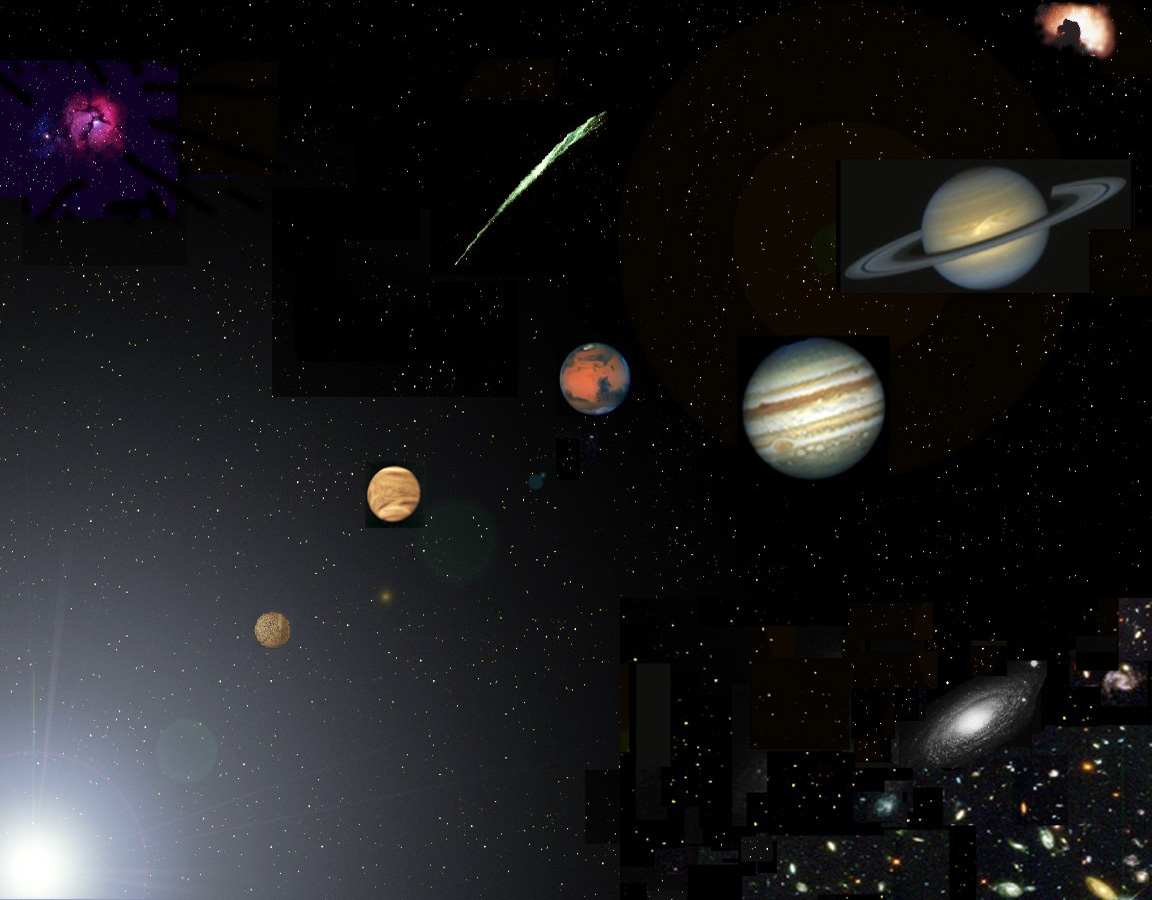
 In the natural world, the most basic example of larger, cosmic inorganic systems is, as has been mentioned, an agglomeration of the three forms of matter: gases, liquids and crystals; and these can be found floating together in space as Nebula or clouds. If a nebula chances to condense, which happens naturally under the influence of gravity, the amount of crystalization increases and planetary bodies are formed; in larger clouds, of course, the colapse continues and stars are formed. If both these physical kinds are formed about one center, a Solar System comes into being. In the natural world, the most basic example of larger, cosmic inorganic systems is, as has been mentioned, an agglomeration of the three forms of matter: gases, liquids and crystals; and these can be found floating together in space as Nebula or clouds. If a nebula chances to condense, which happens naturally under the influence of gravity, the amount of crystalization increases and planetary bodies are formed; in larger clouds, of course, the colapse continues and stars are formed. If both these physical kinds are formed about one center, a Solar System comes into being.
 Now, since the initial large structures of the Universe were presumedly galactic-sized nebula, the formation of solar systems is not isolated but occurs rather in gravitationally associated groups. This leads to the formation of local groups of not only solar systems, but galaxies, galactic groups, and even the so-called super-galactic groups. The collection of all these systems is the extent of what might be called the galactic inorganic systems. As opposed to these galactic inorganic systems, we might speak of the planetary inorganic systems. Of course, as all such planetary systems are presumably parts of galaxies, all the planetary inorganic systems that exist are actually just small-scale, localized component subsystems of these galactic systems. And of course, your body is living upon one of the member-planets of just such a planetary system. Now, since the initial large structures of the Universe were presumedly galactic-sized nebula, the formation of solar systems is not isolated but occurs rather in gravitationally associated groups. This leads to the formation of local groups of not only solar systems, but galaxies, galactic groups, and even the so-called super-galactic groups. The collection of all these systems is the extent of what might be called the galactic inorganic systems. As opposed to these galactic inorganic systems, we might speak of the planetary inorganic systems. Of course, as all such planetary systems are presumably parts of galaxies, all the planetary inorganic systems that exist are actually just small-scale, localized component subsystems of these galactic systems. And of course, your body is living upon one of the member-planets of just such a planetary system.
|

